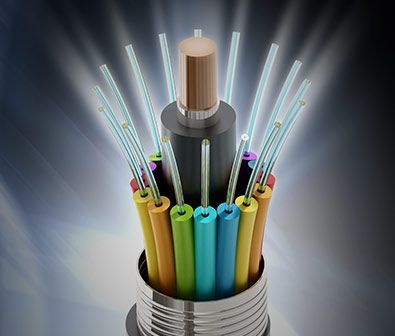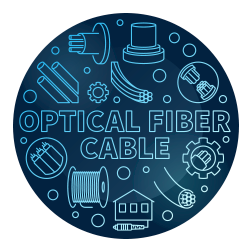Lighting and electricity go hand-in-hand. As in history, electricity begot the light bulb and now, the light bulb will beget fiber optics. If you’re unfamiliar with fiber optics, it’s an intriguing way of lighting your commercial building that uses electricity in a fascinating way.

Lighting The Future: Fiber Optics
Before, fiber optic cables have been used for far more practical applications like telephone systems, cable TV and providing the internet connectivity. They’re extremely efficient, easily adaptable and offer a versatile way to provide power and connect areas to the grid with ease. As a company that prides itself on being on the front-end of electrical contracting trends and improvements, we’ve started to take just as much of an interest in the progression of fiber optics and how they’re going to bring power, lighting and more to our customers as they improve.

The Composition Of Fiber Optics
All fiber optic lines are super thin strands of pure glass, think as fine as a strand of human hair. These tiny strands can pass digital information over huge distances in record time and can increase the ease of medical imaging as well as mechanical engineering. They’re truly the substance of the future and provide loads of opportunity for innovation around the technologies we know and enjoy on a daily basis. When these tubes are used to transmit light signals, they’re using a “light pipe” function. However, fiber optic cables transfer all data through light energy along each strand of bundled glass; when it’s only being used for light, it’s only communicating light, and no other signals.

Some fiber optics transmit less light because of the fact that their interior fibers are made of plastic, rather than glass which makes them less effective at translating any signals, regardless of if their purpose is just for lighting or for transferring data. The fiber optic lighting option can be used in several ways. Side glow is when you light up fiber optics like you would light up a neon sign, with light leaking outward along the entire tube. Or, there’s a way of using fiber optics for lighting that’s called end glow, which is where the glow of the light creates a spotlight effect at the end of the optic cable.
The main difference between fiber optics cables used for lighting versus communication is that fiber optics used for communication purposes have a very thin casing around the glass optic wires so that it can optimize the bandwidth for that information to move along. The lighting optics actually work with a thicker casing so that it can keep the light refracting and gleaming from the inside of the fiber optic wire.

How To Choose Electrical Fiber Optics
As you may have guessed, fiber optics with glass interiors tend to work better in most regards. They can withstand heat better than their plastic counterparts, and therefore rarely have to have a limited light transmission to avoid overheating and potentially melting. However, many will suggest using plastic filled fiber optics, and in some cases they are better suited to certain roles, but as a whole, they’re simply less expensive and easier to install than their glass counterparts.
Where do these fiber optics transfer their lights from? The light source that transmits the light waves through the optic cables is called the fibre optic illuminator, and it not only provides a light source but also helps the optic cables focus the light more effectively.

The Possibilities In Fiber Optic Lighting
As a business, you need to put your right foot forward when meeting and greeting new clients. For that reason, many office spaces invest in fiber optics and industry commercial headquarter buildings because this lighting is nothing if not impressive. From accentuating your lobby’s sculptures to making any water features on campus look exceptional, fiber optics is often the answer to that design issue. If you’re considering investing in fiber optics on your upcoming building project, consider a few key questions first: what is being lighted, are there unique architecture designs we want to emphasize, and what sorts of light should be desired.
Obviously, once you decide those factors, there’s a load of designer related questions you’ll have to answer first, but there’s also a few caveats to what fiber optic lighting can accomplish. For example, the color may be limited as some colors require different sources that depend on the chromatic attenuation which can be limited in certain applications, additionally some sources create quite a bit of heat and will therefore need a way to ventilate. Solving those problems requires the kind of experience and creativity that you can only get from an experienced electrical contractor like Benchmark Electrical Solutions in the Northern Colorado area.

The Benchmark Electrical Solutions Difference
Since we favor our construction planning and management side just as much as our electrical contracting side, we know what it takes to make the most of an electrical system that can sing when put under any sorts of stress while still satisfying all of your needs. If you need specialized attention paid to the wiring design of your commercial building project, we can help.

If you’re looking to pursue the best and the brightest versions of the upcoming lighting trends and electrical wiring infrastructure? Benchmark Electrical Solutions can approach your project as both electrical contractors and construction managers so that we can offer a unique perspective on your project and help you get the most out of your resources. Schedule your initial consultation for your project today.
